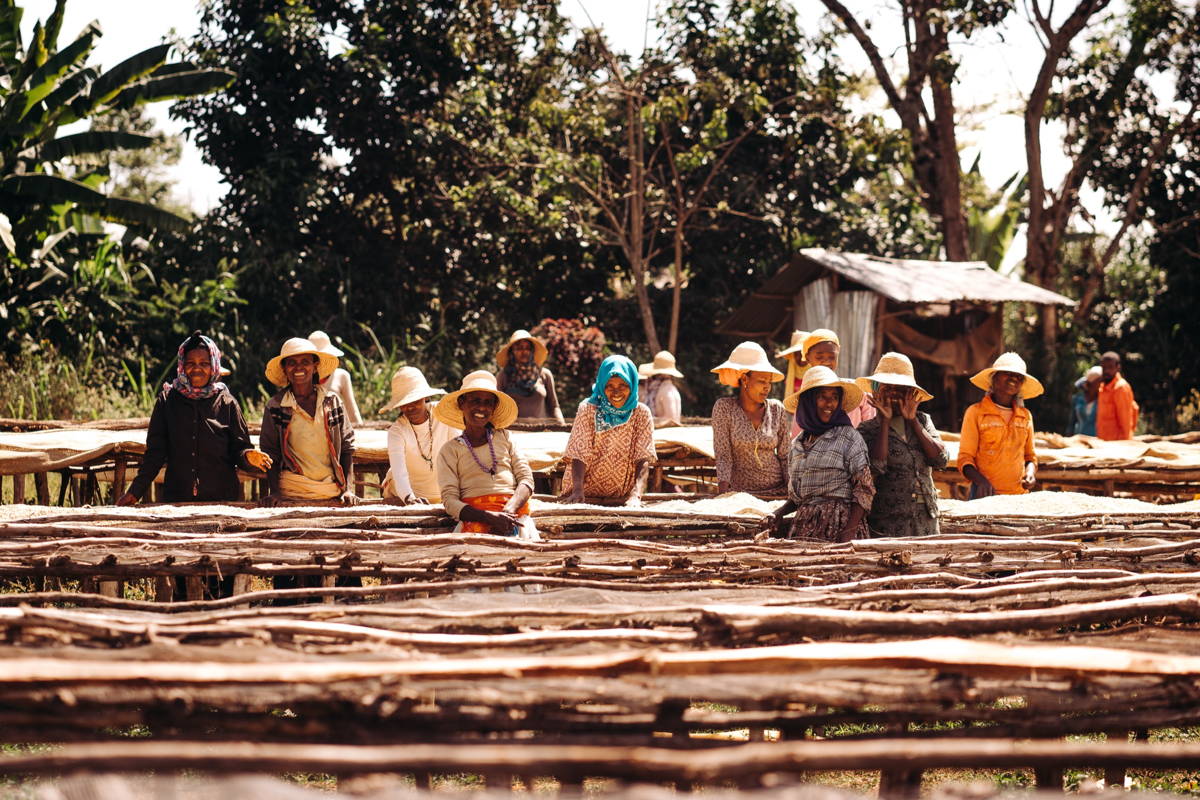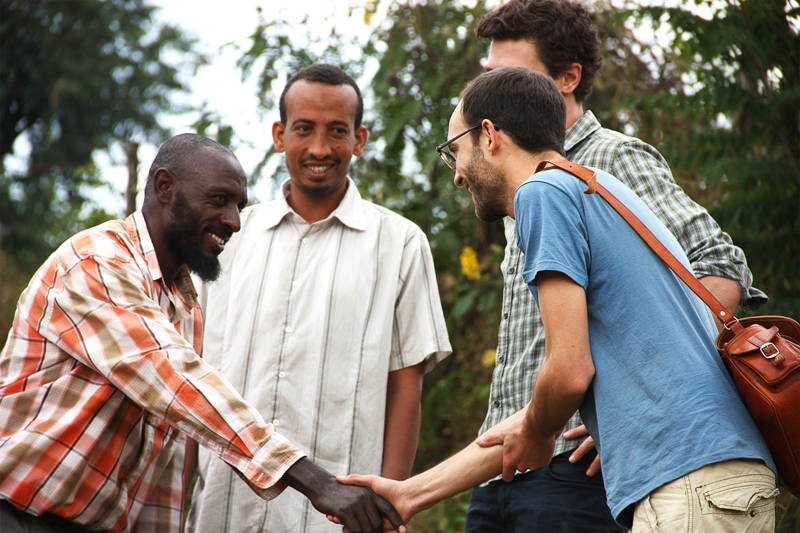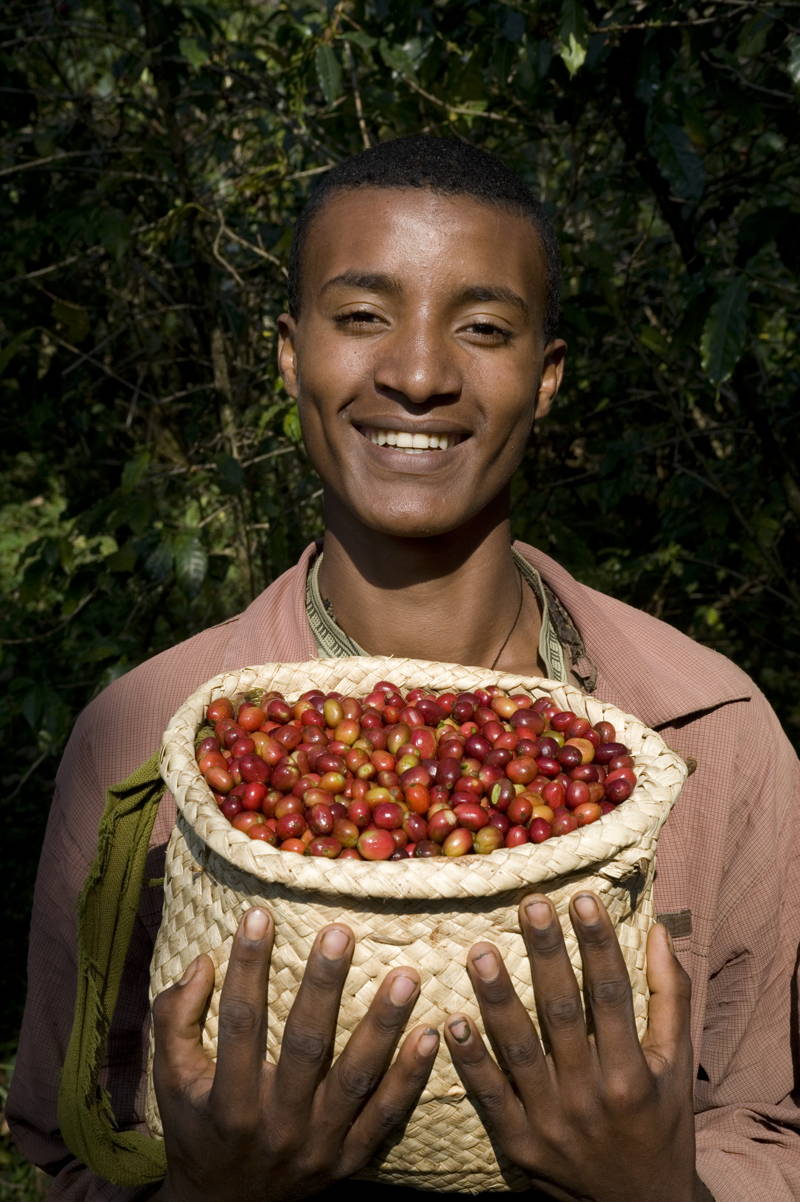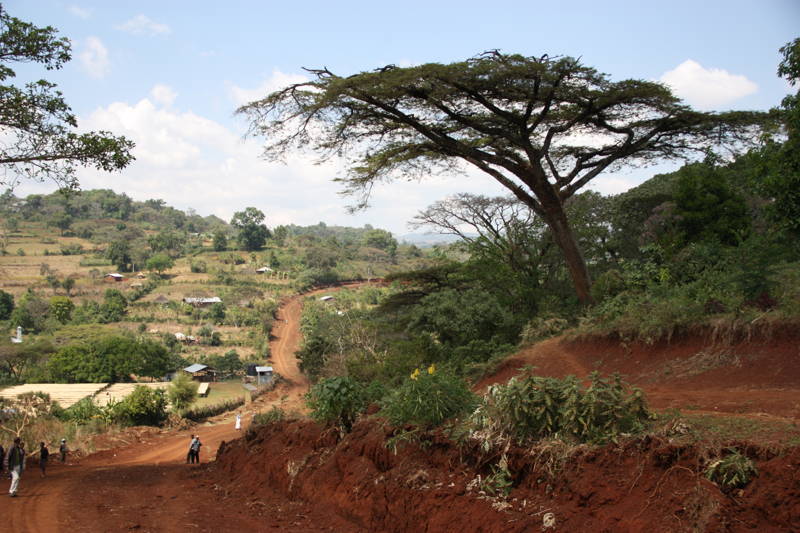
Ethiopia – Land of Coffee
Ethiopia, that’s 13 months of sunshine, that’s about 3 times the size of Germany, that’s rock-hewn churches that are World Heritage Sites, that’s the headquarters of the African Union, that’s … But first things first.
13 months of sunshine? That’s right, 13 months! Because the Ethiopian calendar follows its own calendar. For example, the new year begins on 11 September and the last month comprises only a few days. Moreover, the Ethiopian calendar is six years behind our time. Ethiopia is one of the oldest states in the world and is home to about 97 million people who live together in more than 80 tribes.
Ethiopia is the country of origin of coffee
…and world-famous for its coffees. Coffee in Ethiopia is mostly harvested in natural forest gardens. Most sun-dried Ethiopian coffees come from the mountainous regions east of the capital Addis Ababa and are called Harrars – after the town located there. Most of the washed coffees come from the highlands south and west of Adis Ababa. The coffees are named after the different regions of origin, e.g. Yirgacheffe, Sidamo und Limu. While the Harrar and other dry-processed coffees from Ethiopia taste distinctive, mysterious and ambiguous, the country’s best washed coffees are simply elegant: their aroma is bright, high-toned, almost floating with lemon and flower tones. This is also true of our Sidamo and Limu coffees: both have complex flavours and shimmer with lemon, spice and floral tones. Ethiopia’s Yirgacheffe coffees are the measure of all things in the coffee world in terms of taste. With their extravagant, lemony, floral flavours, they are unmistakable.


Coffee is an important part of daily life in Ethiopia
Families living in the countryside in particular come together three times a day for coffee ceremonies to enjoy their coffee together. Last but not least, the country is one of the largest coffee exporters in the world. Along with vegetables, oilseeds, flowers and livestock, coffee is one of the country’s most important exports. But there is more to drink in Ethiopia than just conventional coffee. Since the Italian occupation from 1936-1941, you can get cappuccino in almost every village, no matter how small. Incidentally, the Italians did not manage to control all of Ethiopia, making it the only country in Africa that was never successfully colonised.
Besides coffee culture, religion also plays an important role in the lives of Ethiopians. In late antiquity, what is now Ethiopia was considered one of the first Christian kingdoms. So there is a long Christian tradition. Today, the country is characterised by religious diversity. Besides the Christian majority, there is also a large proportion of Muslims. The common life of both faiths is characterised by great tolerance. One tradition says that after a group of Muslims found refuge in Ethiopia and were warmly received there, the Prophet Mohammed exempted the Christian Ethiopians from jihad as the only non-Muslim faith group.

Ethiopia lives religious diversity
Christian holidays are celebrated impressively in Ethiopia. Pilgrims travel in droves to the typical Ethiopian rock churches, which are particularly widespread in the north of the country, around the city of Lalibela. These churches are carved out of a single piece of rock and the image that presents itself during Christian holidays is unique. Around the memorials, people dance in their white robes, scarves and shawls. Ethiopia is also committed to tolerant coexistence at the political level. The headquarters of the African Union, for example, is located in Ethiopia’s capital Addis Ababa. The African Union is a loose association of 53 African states that, following the example of the EU, works to preserve peace, security and solidarity on the African continent.
Besides coffee, there are many other typical Ethiopian foods. One of them is Teff. This is a type of dwarf millet from which, for example, beer or flat bread, the so-called injera, is made. In any case, injera belongs to a good meal. What looks like a pancake at first glance is a spicy flatbread and is eaten together with various meat and vegetable dishes. It serves not only as food, but also as a plate on which the prepared food is served. When eating, a piece of the pita is torn off with the right hand and then the corresponding side dish is grabbed and eaten with it.



Ethiopia is also very diverse in terms of landscape
The south of the country is mostly sandy steppe landscape. The west, on the other hand, where we get our coffees from, is very green and there are many mountain rainforests. The north also has its special features with its Danakil plain. This plain is home to one of the world’s four permanently active volcanoes. Erta Ale rises in the middle of the desert and, once you have made the ascent, you can see the inside of the earth. Besides the volcano, the Danakil Plain also has other things worth seeing. There are many sulphur landscapes and salt lakes. For example, caravans regularly travel into the desert to dig salt plates out of the ground and then bring them in several day’s march to the city to sell them there.
The landscape is as diverse as his coffee
As you can see, Ethiopia’s landscape and culture is as diverse as the taste of its coffee. Poverty and lack of water severely limit the people and their cultural life. We are doing everything we can to find a way out of this together with the people, which they will sooner or later be able to master on their own.


